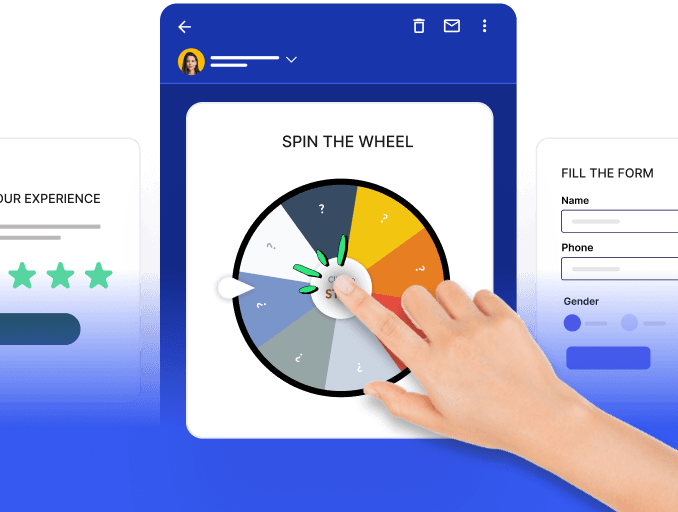In a market where staying ahead of the curve is key, ecommerce businesses need to understand their customer’s wants and behaviors to better cater to them. This is where customer data plays a huge role and becomes of utmost importance to businesses.
By analyzing customer data, businesses gain invaluable insights that enable them to tailor their products and services to the needs and requirements of their customers. This customization results in more personal and engaging shopping experiences.
In this guide, we will go through the basics of customer data, its importance, strategies, and the challenges that come with the benefits.
Table of contents
What is customer data?
Customer data is essentially the collection of key details about your customers. It involves gathering various types of information such as their names, ages, genders, and locations, as well as their behavioral patterns and interactions with your business. This data is sourced through multiple channels like websites, mobile apps, social media, and in-person interactions, providing a broad view of customer preferences and habits.
Ecommerce stores that are driven by data actively strive to collect a wide range of customer data. By doing so, they aim to continuously improve the overall customer experience and systematically adapt and improve their business strategies over time.
Importance of collecting customer data
Now that we understand what customer data is, let us understand the importance of data collection.
Assessing product-market alignment
The importance of data lies in its ability to reveal how well products fit with current market trends and consumer needs. It also helps in fine-tuning product selections to better match customer preferences and market demands.
Monitoring funnel marketing
By collecting the right data and understanding each stage of the customer journey, from initial awareness to final purchase, businesses can pinpoint where they lose potential customers and make strategic adjustments to marketing tactics to improve conversion rates.
Customizing marketing campaigns
By analyzing customer data, businesses can create personalized marketing campaigns that speak directly to individual needs and preferences. This leads to more effective engagement, higher conversions, and increased sales.
Improving customer service
Using customer data, service reps gain insights into a customer's product knowledge, purchase history, and latest buys. This information guides more tailored and effective service, enhancing the overall customer experience and customer service software.
Challenges with customer data
While customer data provides various benefits to brands, it also comes with its fair share of challenges. Here are some:
- Handling large volumes of data: Businesses often find themselves overwhelmed by the great volumes of customer data collected and generated from customer interactions, purchases, and online behavior. If you don’t have the infrastructure for it, it can be challenging to collect, store, and analyze such huge amounts of customer data.
- Data privacy and security concerns: Ecommerce businesses need to go through the complexities of data privacy laws like GDPR while ensuring that robust security measures are in place to prevent data breaches. This involves a delicate balance of maintaining customer trust and meeting regulatory requirements.
- Data integration and customer data management: The task of merging data from varied sources such as sales, customer feedback, and online activity can be difficult to deal with for ecommerce businesses. Integrating this data into a coherent and manageable system requires sophisticated software and expertise so that the right kind of data is available to the right marketing team without risking any data leaks.
Types of customer data
Now that we have a basic understanding of customer data, let's navigate these routes and discover what main types of customer data reveals.
1. Personal data
Personal data is any information related to an identifiable individual, covering details like their name, address, email, and behaviors. Personal data falls into two main categories:
Personally identifiable information (PII): This is data that directly reveals who a person is. It's further divided into two types:
- Linked information: These are details that alone can pinpoint an individual's identity, such as their full name, physical and email addresses, login credentials, driver’s license, social security, and passport numbers, along with credit card information, birth date, and contact information.
- Linkable information: This type of data can't identify a person by itself but can do so when combined with other data. This includes a person’s first or last name, location specifics (like country or city), gender, racial or ethnic background, age group, and job information.
Non-personally identifiable information (Non-PII): This kind of data is the opposite of PII. It is anonymous and can't identify an individual. Examples include IP addresses, cookie data, and device IDs.
Note: In some legal contexts, such as under the GDPR, this type of information might still be classified as personal information, which is why we're discussing it here under the umbrella of personal data.
2. Engagement data
Engagement data reveals how customers interact with your ecommerce brand across different ways and channels. This includes:
- Website and mobile application interactions: It looks at metrics like the number of website visits, app usage, the most frequently viewed pages, user navigation paths, and where your traffic comes from.
- Social media engagement: Social media engagement looks at metrics like likes, shares, comments, and views of videos on social media platforms.
- Email engagement: Email engagement data involves open rates, click-through rates, bounce rates, and how often emails are forwarded.
- Customer service information: Engagement data in customer services includes the number of support tickets, the nature of customer inquiries or complaints, and any feedback provided.
- Paid ad engagement: Paid ad engagement reveals how people interact with your paid advertisements, including impressions, click-through rates, costs, and conversion rates.
3. Behavioral data
Behavioral data digs into the patterns or behaviors exhibited by customers during their shopping journey, which can include parts of engagement data. This data is gathered through:
- Transactional data: Transactional data looks at details like subscription and purchasing history, average order value, rates of cart abandonment, overall customer lifetime value, and participation in loyalty programs.
- Product usage: Product usage includes how often certain actions are repeated, how features are used and for how long, completion of tasks, and the devices used.
- Qualitative data: Qualitative data involves looking at where users are paying attention on your site, using tools like heatmaps that track clicks, scrolling behavior, and mouse movements.
4. Attitudinal data
Attitudinal data can be used to understand your customer's feelings and perceptions about your brand and products. It's largely qualitative and subjective and is often more meaningful when combined with quantitative data. This data is typically gathered through methods like surveys, interviews, focus groups, customer feedback, complaints, and reviews.
It includes insights into customer satisfaction, emotional responses, product appeal, personal preferences, motivations, and factors influencing purchase decisions.
Techniques to collect consumer data for ecommerce stores
Now that we understand different types of customer data, let us have a look at a few techniques to collect customer data.
Technique 1: Use website analytics
Website analytics are like a treasure map, guiding you through the digital footprints of your customers. By examining metrics such as page views, email bounce rates, and session duration, you can uncover how customers interact with your site. This insight helps optimize the user experience, making sure every click leads them closer to a purchase.
Technique 2: Use social media
Social media is a goldmine for understanding what buzzes around your brand. Here, you can capture customer sentiments, trending conversations, and direct feedback. It's like having a finger on the pulse of the market, allowing you to align your strategies with what your customers really want.
Technique 3: Collect customer feedback
Customer feedback is the direct line to your customer's thoughts. By actively listening to their praises, concerns, and suggestions, you not only get to improve your offerings but also show that you value their opinion - a big win for customer loyalty.
Technique 4: Conduct surveys
Surveys are like a deep dive into your customers' minds. They can be crafted to explore specific aspects such as product preferences, shopping habits, or service satisfaction. The insights gained here can guide product development and digital marketing strategies.
Technique 5: Track customer support tickets
Customer support tickets are like clues to your customer's pain points. Tracking these can help you understand common issues, allowing you to address them proactively and refine your customer service approach, turning problems into opportunities for improvement.
Technique 6: Track transactional Information
Transactional data is like a storybook of your customer's shopping journey. From what they buy to how often they purchase, this customer information can help you tailor your product recommendations, stock the right items, and even anticipate future trends.
Technique 7: Learn from loyalty programs
Loyalty programs are the secret sauce to customer retention. By analyzing which rewards are redeemed the most and the spending patterns of loyalty members, you can fine-tune your program to be more appealing and effective.
Technique 8: Conduct giveaways
Giveaways are more than just a marketing stunt. By hosting a lucky draw or contest, you not only engage customers but also gather valuable data. With each registration, you get insights into their interests, which can be used to tailor future marketing campaigns or product launches.
Conclusion
For ecommerce stores to keep pace with competition, it's all about really getting to know their customers as well as target audience through data. Sure, it's a challenge juggling massive amounts of data, dealing with privacy issues, data mining, and all that tech. But at the end of the day, using this data smartly means they can make shopping online a whole lot better for everyone – and that's what will keep you ahead of the game.







